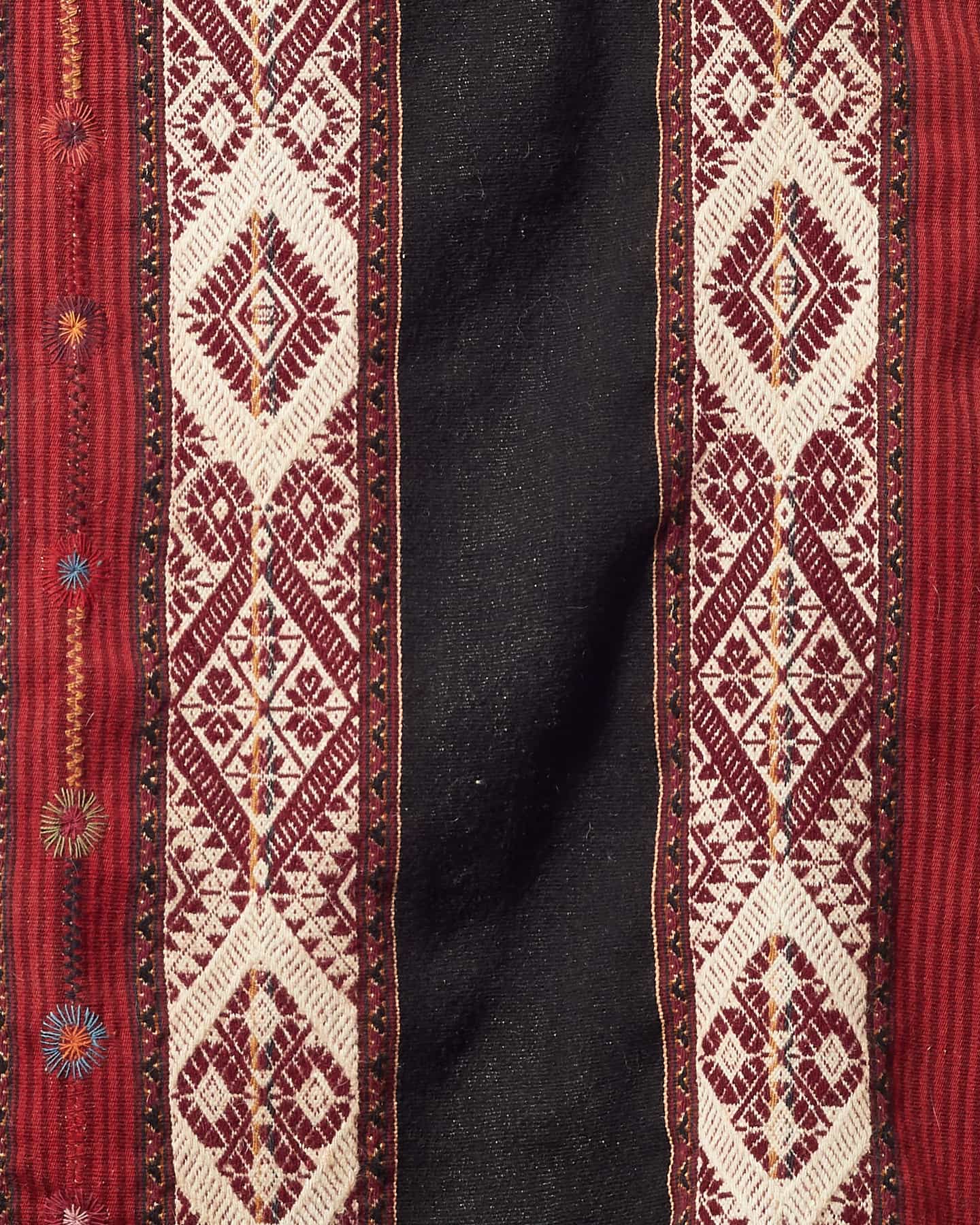


History behind the piece
The lliqlla is a typical textile of the Andes of Peru used by women in indigenous communities mainly as a coat. In contrast to its masculine brother, the poncho, which entered the city in a public and visible way, the lliqlla remained silent among its own and housed geometric signs that reveal, as in other pieces that are part of traditional Andean clothing, the space and identity of its creators.
The lliqlla covers the back of the woman and is traditionally fastened to the chest with silver pins known as tupus. This intricate warm weaving, whose manufacturing process was carried out entirely by hand, is made up of several stripes, among which the pallay bands stand out, a term in Quechua used to indicate the presence of selected geometric motifs in a certain expressive order. The designs do not articulate sentences, but are expressed as notes of a melody that together basically represent the user's environment.
The color has a special meaning beyond its beauty, since the combinations are not used by chance, but rather respect schemes capable of indicating the geographical space to which the fabric belongs. This, in particular, is a traditional piece from the Chawaytiri community in the Calca province (Cusco, Peru) made with alpaca and sheep wool, a specimen considered an expression of ethnographic art1.

Unlike many handmade fabrics that are currently developed on large pedal looms made of wood from the colonization era, this traditional piece was made on a simple backstrap loom; instrument used for more than 5000 years by the ancient inhabitants of the Andes.
Approximately three months were used for its creation, just in terms of setting the the loom and the carefull development of the weaving. It should be noted that this time does not include the previous processes through which its fibers pass: from the shearing of the animal, cleaning of impurities and weeding the fiber, the color classification, the ordered of the strands, the twisting of the same for the obtaining of thread, even dyeing with plants (if applicable), processes that are also carried out by hand.

This piece preserves the traditional characteristics of shape, color, decoration and size typical of the lliqllas of the Chawaytiri community. Its fabric that goes from crimson red to burgundy red (dyed with wild pigments), passing through areas in black and white (natural without dyeing) shows us in its iconography fields of flowers illuminated by stars.
Origin: Chawaytiri, Cusco
Measurements: 89 cm x 93 cm
Condition: Excellent
SKU: 0459
USD
$ 1510.00
$ 1510.00
1Ethnographic Art is considered to be that production made by the member of an ethnic group, made exclusively for personal or communal use, and that necessarily carries a cultural load of the people to which it belongs
ADD THIS PIECE TO YOUR WISH LIST
